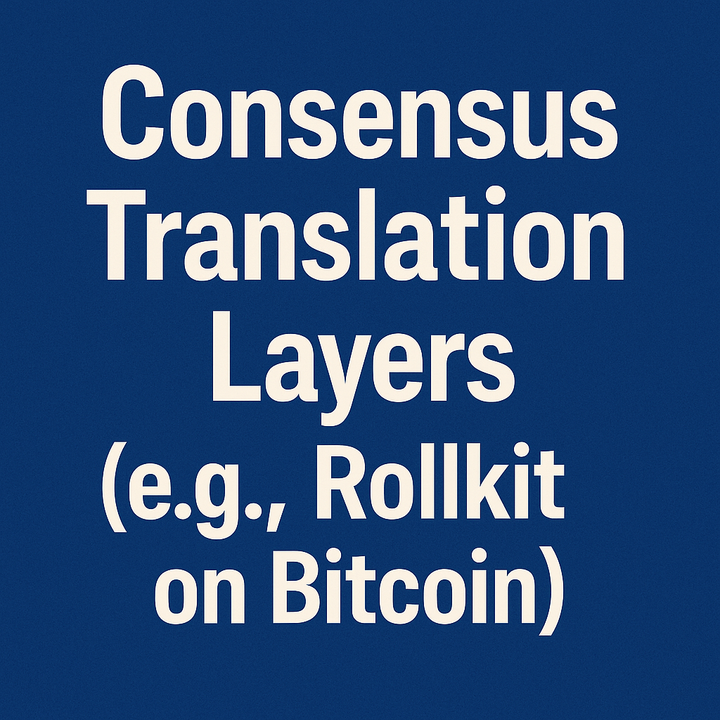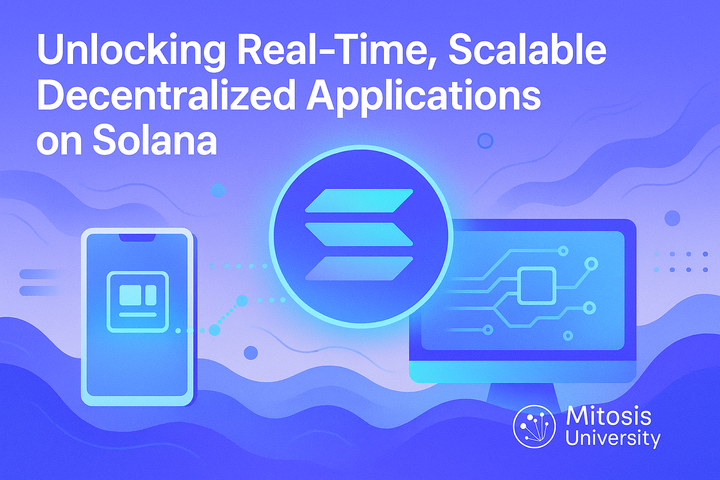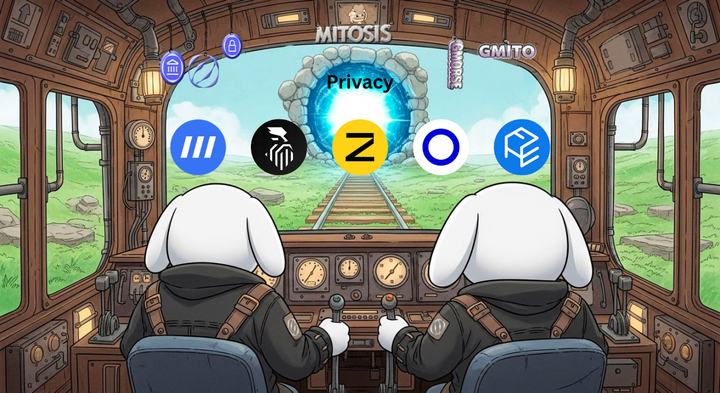Hyperlane at the Heart of Mitosis: Unlocking the Power of Seamless Interchain Communication

1. Introduction: The Need for a Reliable "Postman" for Web3
In a world where the number of blockchains and Layer 2 solutions is growing exponentially, the problem of effective and secure interaction between them is becoming increasingly acute. If we imagine each blockchain as a separate city, then for their full coexistence and economic prosperity, reliable "roads" and "postal services" are needed, capable of quickly and safely delivering not only "cargo" (assets) but also "letters" (data, messages).
Traditional cross-chain bridges have often focused primarily on asset transfer, but modern decentralized applications (dApps) require much more:
- Arbitrary Data Transfer: The ability for a smart contract on one chain to call a function or check a state on another.
- Security Flexibility and Customization: Different dApps may have different security and speed requirements for their interchain operations.
- Permissionlessness: The ability for developers to easily connect new chains without going through lengthy approval processes with a centralized bridge operator.
- Scalability: The ability to support a growing number of chains and message volume.
It is precisely to solve these tasks that new-generation Interoperability/Messaging Protocols were created, and Hyperlane is one of the prominent representatives of this class.
What is Hyperlane and Why is it Important?
Hyperlane is a protocol designed to enable permissionless interoperability. It allows developers to send and receive messages between different blockchains, creating the foundation for truly cross-chain applications.
Key features of Hyperlane that make it an attractive solution:
- Permissionless Interoperability: Any developer can deploy Hyperlane on a new blockchain (EVM-compatible or even non-EVM via adapters) and connect it to the existing Hyperlane network without needing permission from any central party. This significantly speeds up network expansion and the integration of new ecosystems.
- Modular Security (Interchain Security Modules - ISMs): Hyperlane offers a flexible security model. Each application using Hyperlane can choose and configure its own Interchain Security Module (ISM). The ISM defines how messages from other chains will be verified and considered authentic. This can be anything from a simple multisig to a complex system using economic incentives or even zero-knowledge proofs (ZK-proofs).
- Focus on Message Passing: Hyperlane is primarily a message-passing layer, not a bridge for specific assets. This makes it a universal tool upon which various cross-chain applications can be built, including token bridges, DAO governance protocols, cross-chain NFTs, and much more.
Mitosis and Hyperlane: A Strategic Alliance
For a liquidity protocol like Mitosis, which aims to ensure the secure and efficient movement and management of assets in a multichain environment, choosing a reliable and flexible messaging protocol is critically important. Integration with Hyperlane (or a protocol with similar principles) gives Mitosis several significant advantages:
- Foundation for Information Transfer: Hyperlane serves as the "postman" that delivers information about transactions and states between networks, based on which Mitosis then manages liquidity.
- Security Flexibility: The ability to customize ISMs allows Mitosis to integrate its own advanced security mechanisms, such as EigenLayer AVS, directly into the interchain message verification process.
- Scalability and Extensibility: The "permissionless" nature of Hyperlane makes it easier for Mitosis to connect to new blockchains as they emerge and gain popularity.
What Will You Learn From This Article?
In this article, we will explore in detail the synergy between Mitosis and Hyperlane:
- How exactly does Mitosis use Hyperlane for its cross-chain operations?
- How do Hyperlane's modular security (ISMs) and integration with EigenLayer AVS through it enhance Mitosis's overall security?
- What advantages does such deep integration with a messaging protocol give Mitosis compared to more monolithic or less flexible cross-chain solutions?
- How does this combination affect the capabilities of developers building applications on top of Mitosis?
We will show that choosing the right "transport layer" for messages is not just a technical detail, but a strategic decision that determines the security, flexibility, and future potential of the entire cross-chain liquidity protocol.
2. Deep Integration: How Mitosis Leverages Hyperlane to Enhance Its Capabilities
Understanding the basics of Hyperlane is important, but its true value is revealed when examining how Mitosis utilizes this technology to implement its key functions and achieve strategic goals.
1. Secure Message Passing – The Foundation for EOL and Transfers
- How it works in Mitosis: When a user initiates a cross-chain transfer via Mitosis, or when the Mitosis protocol needs to synchronize information about the state of its Ecosystem-Owned Liquidity (EOL) between networks, a message must be reliably transmitted. Mitosis uses Hyperlane as the base transport protocol for these messages. A message containing transaction details or EOL updates is sent from the source chain and delivered to the destination chain via Hyperlane's infrastructure.
- Role of Hyperlane: Ensures the delivery of the message itself and its basic integrity.
2. Enhancing Security via Custom ISMs and EigenLayer AVS
This is one of the most critically important aspects of the synergy.
- Standard Hyperlane Security: Hyperlane itself offers various Interchain Security Modules (ISMs), for example, based on multisigs or optimistic verification.
- Mitosis Goes Further: Mitosis doesn't just use a standard ISM. Thanks to Hyperlane's modularity, Mitosis can deploy its own custom ISM that is integrated with EigenLayer AVS.
- How it works: A message transmitted via Hyperlane, before being recognized as valid on the Mitosis destination chain, must be additionally verified and attested to by AVS operators who are restaking ETH. These operators monitor the Hyperlane channel used by Mitosis and confirm the authenticity of the messages.
- The Result: The security of message passing for Mitosis is elevated to the level of Ethereum's cryptoeconomic security. Attacking this channel becomes extremely expensive, as an attacker would have to compromise a significant portion of AVS operators who are risking their ETH stake.
Advantage for Mitosis: Such deep integration allows Mitosis not to depend on Hyperlane's own base security model (which might be sufficient for some applications but insufficient for managing large liquidity pools), but to impose its own, higher security standard by leveraging the power of EigenLayer.
3. Flexibility and Scalability for Future Growth
- Permissionless Addition of New Chains: Since Hyperlane allows anyone to deploy its contracts on new EVM chains and connect them, Mitosis can relatively easily expand its presence to new promising blockchains and L2s. This is critical for a protocol aiming to unify global liquidity.
- Adaptation to Different Security Requirements: Although Mitosis will use a highly secure ISM with AVS for core EOL operations, theoretically, different ISM configurations could be used for less critical messages or for interacting with chains that have different trust models, providing flexibility.
Advantage for Mitosis: The ability to quickly adapt to the changing Web3 landscape and expand its coverage without waiting for updates from a centralized bridge service provider.
4. Enhanced Capabilities for Developers on Mitosis
dApp developers building on top of Mitosis indirectly benefit from this synergy:
- Reliable Base Infrastructure: They can be confident that cross-chain operations provided by Mitosis are highly secure.
- Potential for Complex Cross-Chain Logic: Since Hyperlane can transmit arbitrary data, dApps integrated with Mitosis will in the future be able to implement more complex cross-chain interactions than just token transfers (e.g., cross-chain smart contract calls, state synchronization), relying on Mitosis as a secure and liquid channel.
Conclusion: Hyperlane as the "Nervous System" for Mitosis's "Heart"
If Mitosis, with its EOL model, can be compared to the "heart" of cross-chain liquidity, then Hyperlane (reinforced by EigenLayer AVS) serves as its "nervous system" – a reliable and fast communication network ensuring coordination and the secure transmission of vital information between all parts of this complex organism.
Deep integration with a flexible and secure messaging protocol like Hyperlane allows Mitosis not only to solve current asset transfer tasks but also to lay the foundation for future innovations in cross-chain DeFi. It's a strategic partnership of technologies where each component enhances the other, creating a synergistic effect that positions Mitosis at the forefront of the race to create a truly unified and secure Web3.
Choosing such an advanced and modular messaging solution underscores Mitosis's commitment to building not just a bridge, but a comprehensive, sustainable, and future-ready liquidity infrastructure.
Learn more about Mitosis:
- Explore details on the official website: https://www.mitosis.org/
- Follow announcements on Twitter: https://twitter.com/MitosisOrg
- Participate in discussions on Discord: https://discord.com/invite/mitosis
- Read articles and updates on Medium: https://medium.com/mitosisorg
- Blog: https://blog.mitosis.org/



Comments ()